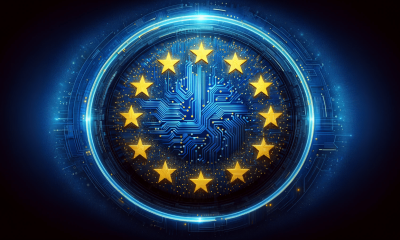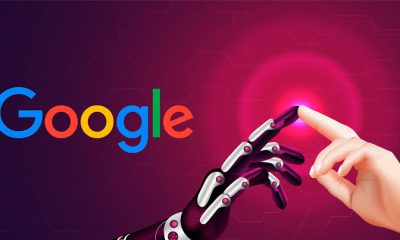
News
Generative AI Tools: Revolutionizing Creative Industries

Generative AI tools have emerged as groundbreaking technology, transforming the landscape of creative industries. These tools, powered by artificial intelligence (AI) and machine learning, enable the generation of innovative and engaging content across various domains.
From generating art and music to designing user interfaces and creating realistic virtual environments. Generative AI tools such as DeepArt, Amper Music, Adobe Sensei, OpenAI’s DALL-E, RunwayML, Jukedeck, Autodesk Dreamcatcher, Artomatix, Google’s DeepDream, and Nvidia GauGAN have opened up new possibilities for creative expression and automation.

In this article, we will explore the top 10 generative AI tools that are making waves in the creative world. But before we delve into specific tools, let’s understand what generative AI tools are and how they work.
What Are Generative AI Tools?
Generative AI tools are software applications that leverage advanced AI algorithms, such as neural networks and deep learning, to generate original and creative outputs. These tools can learn from large datasets and mimic human-like creativity to produce new content autonomously. By analyzing patterns, styles, and structures in existing data, generative AI tools can generate artwork, music, designs, and even text that exhibit creativity and uniqueness.

Exploring the Top 10 Generative AI Tools
- DeepArt: DeepArt is a generative AI tool that specializes in transforming images into artistic styles inspired by famous painters. It uses neural networks to analyze the input image and generate visually stunning artistic renditions.
- Amper Music: Amper Music is an AI-powered music composition tool that allows users to generate original music tracks tailored to their preferences. It offers a wide range of styles, moods, and instrumentation options.
- Adobe Sensei: Adobe Sensei is Adobe’s AI platform that integrates generative AI capabilities into various creative applications. It enables tasks such as content-aware fill, intelligent image resizing, and automated video editing.
- OpenAI’s DALL-E: OpenAI’s DALL-E is a generative AI model capable of generating unique images from textual descriptions. It can generate imaginative and coherent images based on specific prompts, pushing the boundaries of visual creativity.
- RunwayML: RunwayML is a versatile generative AI tool that provides a user-friendly interface for creating and exploring AI models. It supports various AI frameworks and allows users to experiment with different creative applications.
- Jukedeck: Jukedeck is an AI-driven music composition tool that generates original royalty-free music for videos, podcasts, and other creative projects. It offers customization options for tempo, genre, and instrumentation.
- Autodesk Dreamcatcher: Autodesk Dreamcatcher is a generative design tool that uses AI algorithms to optimize and generate complex 3D models based on specified constraints. It allows designers to explore and iterate on innovative design solutions.
- Artomatix: Artomatix is a generative AI tool focused on automating the texturing and material creation process in 3D computer graphics. It uses AI algorithms to analyze and generate realistic textures for virtual objects.
- Google’s DeepDream: Google’s DeepDream is a popular generative AI tool that creates hallucination-like images by modifying existing photos using deep neural networks. It produces surreal and dream-like visuals.
- Nvidia GauGAN: Nvidia GauGAN is a generative AI tool that transforms rough sketches into realistic landscapes, scenes, and objects. It allows users to create detailed and visually appealing digital artwork with ease.
It’s important to note that while each tool has its own unique features and benefits, the selection of a generative AI tool depends on specific requirements and creative goals.

generative ai
Comparing Generative AI Tools
When choosing a generative AI tool, several factors should be considered. Let’s compare these tools based on key aspects:
– User interface: Evaluate the ease of use and intuitiveness of the tool’s interface.
– Functionality: Assess the range of features and capabilities offered by each tool.
– Customizability: Consider the level of control and customization options available.
– Performance: Evaluate the speed, efficiency, and output quality of the generated content.
– Integration: Check whether the tool can be seamlessly integrated into existing workflows and platforms.
Keep in mind that while these tools provide immense value, there are pros and cons associated with each tool. Some tools may excel in certain areas while having limitations in others. It’s essential to assess these factors and choose a tool that aligns with your specific needs and preferences.
[the_ad id=”41670″]
Implementation and Best Practices
To make the most of generative AI tools, it’s important to follow best practices during implementation. Consider the following steps:
- Preparing Data: Ensure that your datasets are curated, diverse, and representative of the desired outputs.
- Training and Fine-tuning Models: Train the AI models using appropriate algorithms and techniques, and fine-tune them to achieve desired results.
- Incorporating into Workflows: Integrate generative AI tools into your existing creative workflows, leveraging their capabilities to enhance efficiency and creativity.
- Ethical Considerations: Be mindful of ethical implications and potential biases associated with generative AI tools. Regularly evaluate outputs to avoid unintentional biases or controversial content.
By following these best practices, you can harness the true potential of generative AI tools while ensuring responsible and ethical use.
The Future of Generative AI Tools
As technology continues to advance, generative AI tools are poised to play an even more significant role in creative industries. Some key aspects to consider:
– Advancements and Trends: Stay updated on the latest advancements and trends in generative AI tools, including new algorithms, models, and techniques.
– Industry Impact: Explore the potential applications of generative AI tools across industries such as design, music, marketing, and entertainment.
– Challenges and Prospects: Understand the challenges associated with generative AI tools, such as interpretability, data bias, and legal implications. Explore potential solutions and future prospects for these tools.
With their ability to automate creative tasks, augment human creativity, and push the boundaries of what’s possible, generative AI tools are set to revolutionize the way we create and experience content.
RELATED: What is Generative AI?
How to Use Generative AI for Your Content Marketing
Frequently Asked Questions (FAQs)
- What are generative AI tools? Generative AI tools are software applications that leverage AI algorithms to autonomously create original and creative content such as art, music, designs, and text.
- How do generative AI tools work? These tools analyze patterns in existing data and use machine-learning techniques to generate new content based on those patterns.
- What are some popular use cases of generative AI tools? Generative AI tools find applications in graphic design, music composition, content creation, virtual reality, architecture, and more.
- How can generative AI tools be implemented in business settings? Generative AI tools can streamline content creation processes, improve design workflows, and enable the rapid generation of customized content for marketing purposes.
- What are the potential limitations or risks associated with generative AI tools? Generative AI tools may face challenges such as data bias, interpretability, and the ethical implications of generating content autonomously.
- Are generative AI tools accessible to non-technical users? While some generative AI tools require technical expertise, there are also user-friendly tools available that cater to non-technical users, allowing them to create content without extensive coding knowledge.
Conclusion:
In conclusion, generative AI tools are transforming the creative landscape, enabling automation, and expanding the boundaries of human creativity. By exploring the top 10 generative AI tools, understanding their features, and implementing best practices, individuals and businesses can leverage these tools to unlock new possibilities in various creative domains.
Remember, while generative AI tools offer exciting prospects, it’s essential to keep up with advancements, embrace responsible use, and continuously innovate to stay at the forefront of creative industries.




























